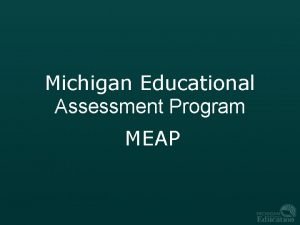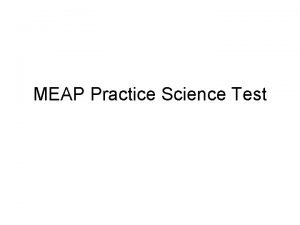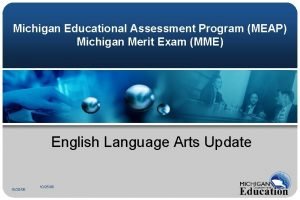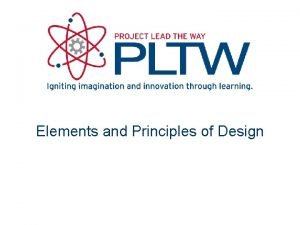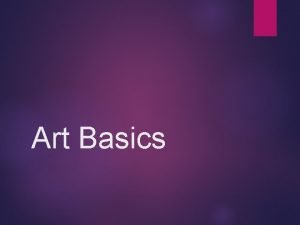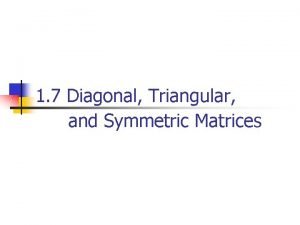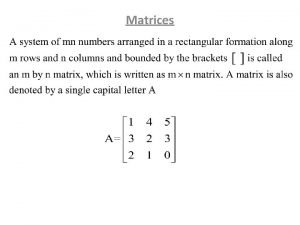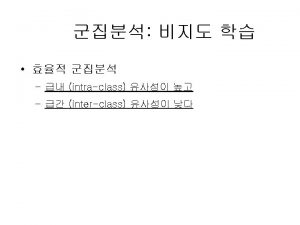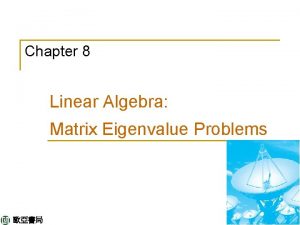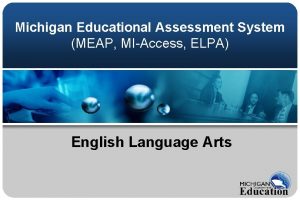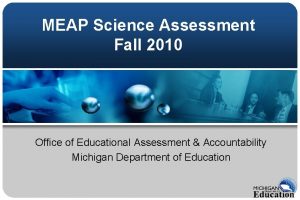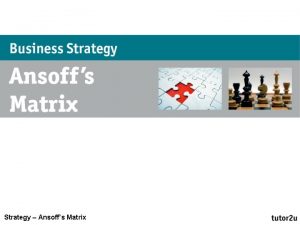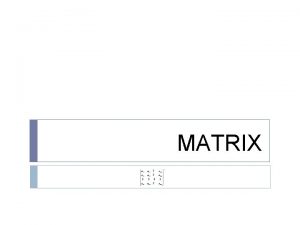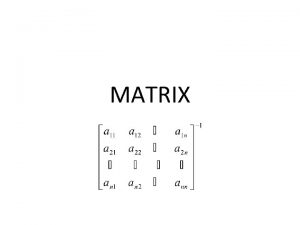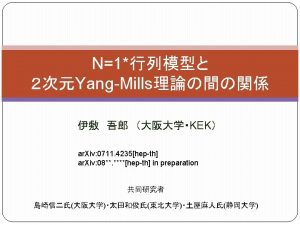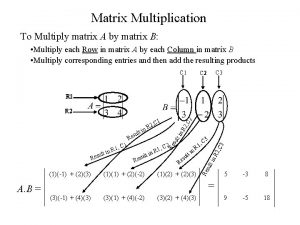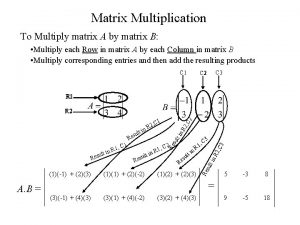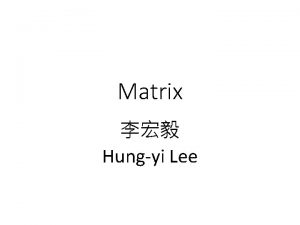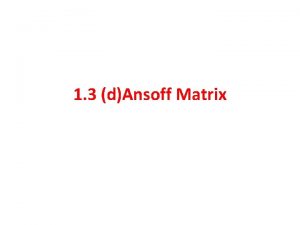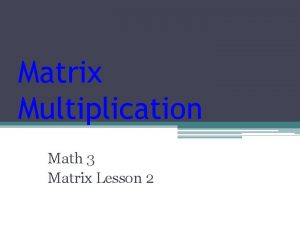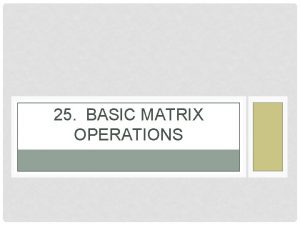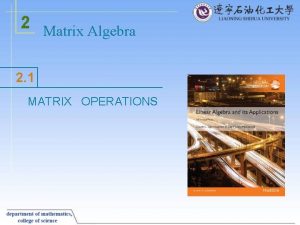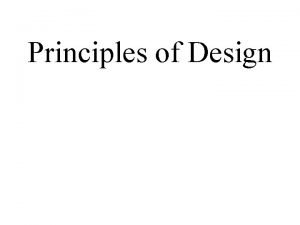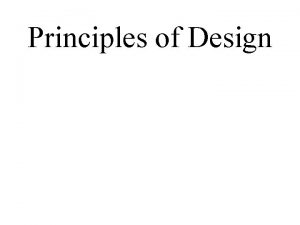MEAP Assessment Matrix and Design Principles for PROMISE





















- Slides: 21

MEAP Assessment Matrix and Design Principles for PROMISE on 8/12/04 Presented by Michael Radke Ph. D. Supervisor, Michigan Educational Assessment Program Michigan Department of Education Office of Educational Assessment & Accountability radkem@michigan. gov 1

Objectives ¬Review current status of NCLB ¬Discuss current thinking about test redesign and gain your advice ¬Review the roadmap to implementation in 2005 -2006 2

NCLB: Basic Principles ¬Student Learning ¬Effective Teaching ¬Accountability (Continuous Improvement) – Measurement of learning and teaching – Attributing results to schools – Consequences 3

Current issues for states ¬Increased accountability – 50+ ways to fail – Sanctions – publicity to restructuring ¬Increase temptation to cut corners – Testing practices – ethics issues and administrative errors at the student, teacher, and administrative levels – Reclassifying, exiting and coaching students 4

Solutions proposed or being implemented in Michigan ¬Office of Educational Assessment and Accountability bringing together – MEAP for most students – MI – Access for students with significant disabilities – An ELL assessment for students not proficient in English – AYP & Ed YES! Accountability – Coordinating with CEPI 5

Solutions, questions, discussions underway ¬ Fall testing for ELA, Math, Science, Social Studies at Elementary and Middle school ¬ How to register for early October testing? ¬ Set new performance standards? Yes. ¬ Impact on report cards? ¬ Ethics Policy being revised. ¬ ACT vs. MEAP at High School 6

Current thinking about test redesign: The Matrix ¬ The Test Matrix consists of – Core Items measure the overlap of the current benchmarks and the GLCE’s – Core replacement items (field test items) – Future core items: new, changed or moved items from GLCE’s to broaden coverage of expectations prerequisite assessed – Extended Core items: measure expectations or benchmarks that are supportive, enabling, or prerequisite to Core items 7

Current thinking about test redesign: The Matrix YTBA ¬ What counts toward Student scores? – The Core items – Possibly Extended Core items ¬ What counts toward School Scores (AYP and Ed YES!) – Core items – Future Core items in 2009 or 2010 – Likely Extended Core items 8

Current thinking about test redesign: The Matrix YTBA ¬ On what items will schools get results information? – Core, – Extended Core, and – Future Core ¬ No information provided on Field Test (Replacement Core) items ¬ YTBA? ? ? The Matrix is Yet To Be Approved 9

New test designs being developed (some examples) n Example: n n ~90 Core items ~6 Future Core ~6 Extended Core ~8 Core Replacement 10

Field Testing: How does it work for ELA and Math? Field testing Winter 2005 v. Embedded field test items where currently testing v. Free standing pilots with a sample of schools 11

Current thinking about Test Design: Principles ¬ Curriculum drives assessment ¬ 2 hours per subject ¬ Time limits on testing ¬ Matrix designed tests ¬ Grade appropriateness of tests and items ¬ Items targeted to GLCE’s or Benchmarks ¬ Increase number of items (3 similar items/GLCE or benchmark) 12

Test Design: Principles ¬Less reading dependence on Nonreading tests ¬Item independence ¬Most efficient item format/GLCE or benchmark ¬Shorten pages for extended responses 13

Test Design: Principles ¬More teachers involved in writing & editing items/tests ¬Equivalence of tests cycle to cycle ¬Report revisions ¬No more additional sheets for any Constructed or Extended response items 14

Design changes considered for Mathematics ¬Calculator Use: Prohibited on some parts of test, permitted on others; no memory, no communication devices ¬Continue: – Reference sheets where Grade appropriate – Measurement and grid tools 15

Design changes contemplated for ELA ¬Add second, shorter response and a few multiple-choice items (e. g. , editing and revising in context) to strengthen writing scores ¬Grade appropriate writing tasks ¬Allow for segments that can be administered in any order 16

Design changes contemplated for ELA ¬Discontinue organization of entire test forms around single themes ¬Continue to assess themes within texts and across pairs of texts. ¬Increase the number of reading texts on a single form 17

Current thinking: Redesign of Science & Social Studies ¬ Be consistent with previous principles ¬ Proposal: Science tested at grades 5 and 8, Social Studies tested at grades 6 and 9 ¬ GLCE’s benchmarks ? ? ? A curriculum decision first 18

Roadmap to Implementation – the steps from here to there ¬HERE = ELA and Math GLCE’s disseminated March 30, 2004 ¬Resolve Science & Social Studies questions ¬Develop GLCE codes & recode items ¬Inventory and Develop new items ¬Analyze Current benchmarks vs. GLCE’s 19

Development of testing – the steps from here to there ¬Define items as CORE, extended, or future core ¬Redesign test formats ¬Pilot testing (Next Year 2004 -2005) ¬Federal approval ¬THERE = operational tests ELA and Math (2005 -6) Science (2007 -8) 20

Questions or comments Michael Radke Ph. D. MEAP Supervisor Michigan Department of Education Office of Educational Assessment and Accountability radkem@michigan. gov (517) 241 -0206 21
 Oeaa secure site
Oeaa secure site Meap practice tests
Meap practice tests Meap test questions
Meap test questions Gradated rhythm
Gradated rhythm Art basics
Art basics Interior design lecture notes+ppt
Interior design lecture notes+ppt Examples of diagonal matrix
Examples of diagonal matrix Example of an orthogonal matrix
Example of an orthogonal matrix Dissimilarity matrix
Dissimilarity matrix Anti hermitian matrix
Anti hermitian matrix Girl scout law and promise
Girl scout law and promise Cpcc student services
Cpcc student services Fspos vägledning för kontinuitetshantering
Fspos vägledning för kontinuitetshantering Novell typiska drag
Novell typiska drag Nationell inriktning för artificiell intelligens
Nationell inriktning för artificiell intelligens Vad står k.r.å.k.a.n för
Vad står k.r.å.k.a.n för Shingelfrisyren
Shingelfrisyren En lathund för arbete med kontinuitetshantering
En lathund för arbete med kontinuitetshantering Underlag för särskild löneskatt på pensionskostnader
Underlag för särskild löneskatt på pensionskostnader Tidbok för yrkesförare
Tidbok för yrkesförare Sura för anatom
Sura för anatom Vad är densitet
Vad är densitet
